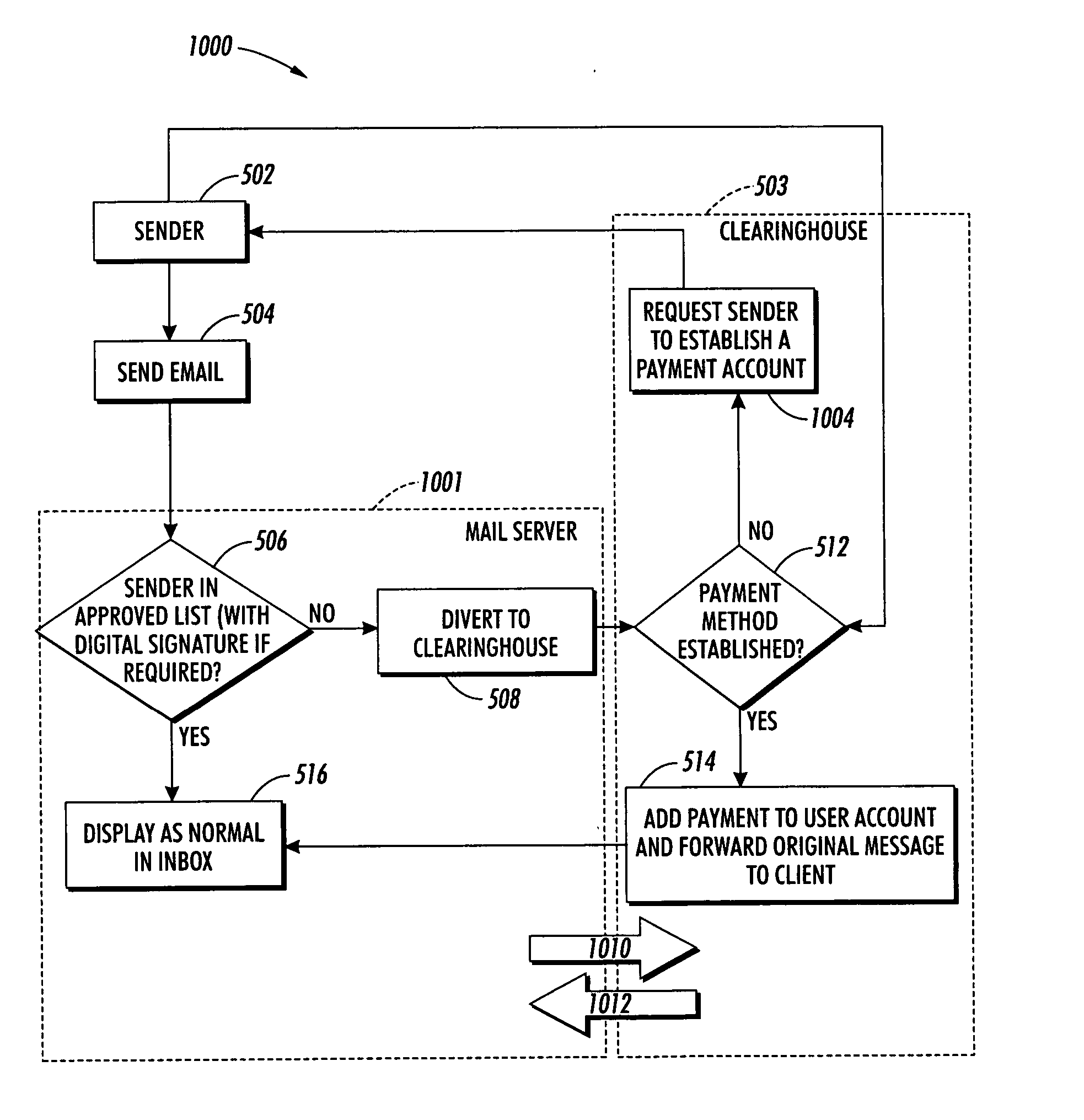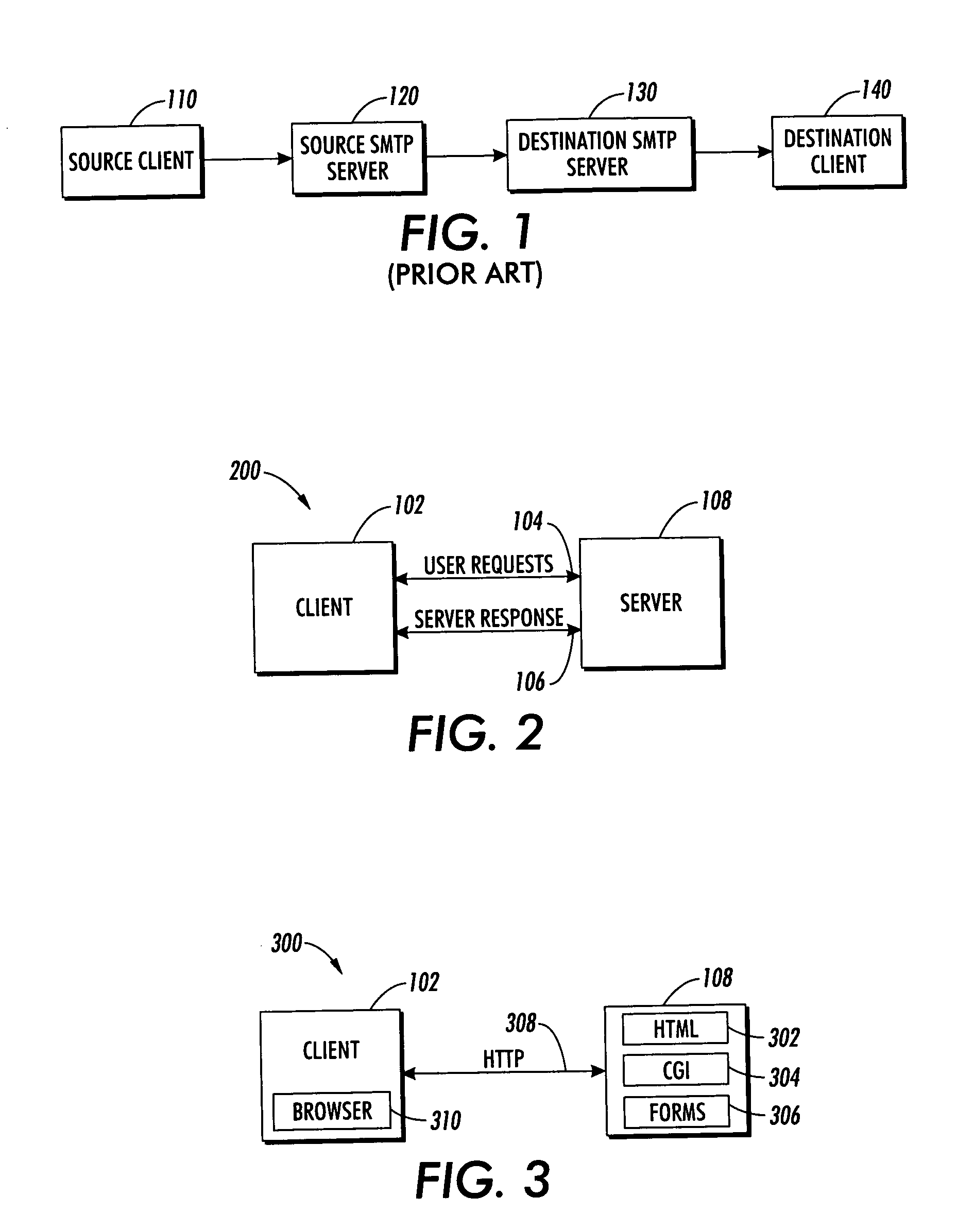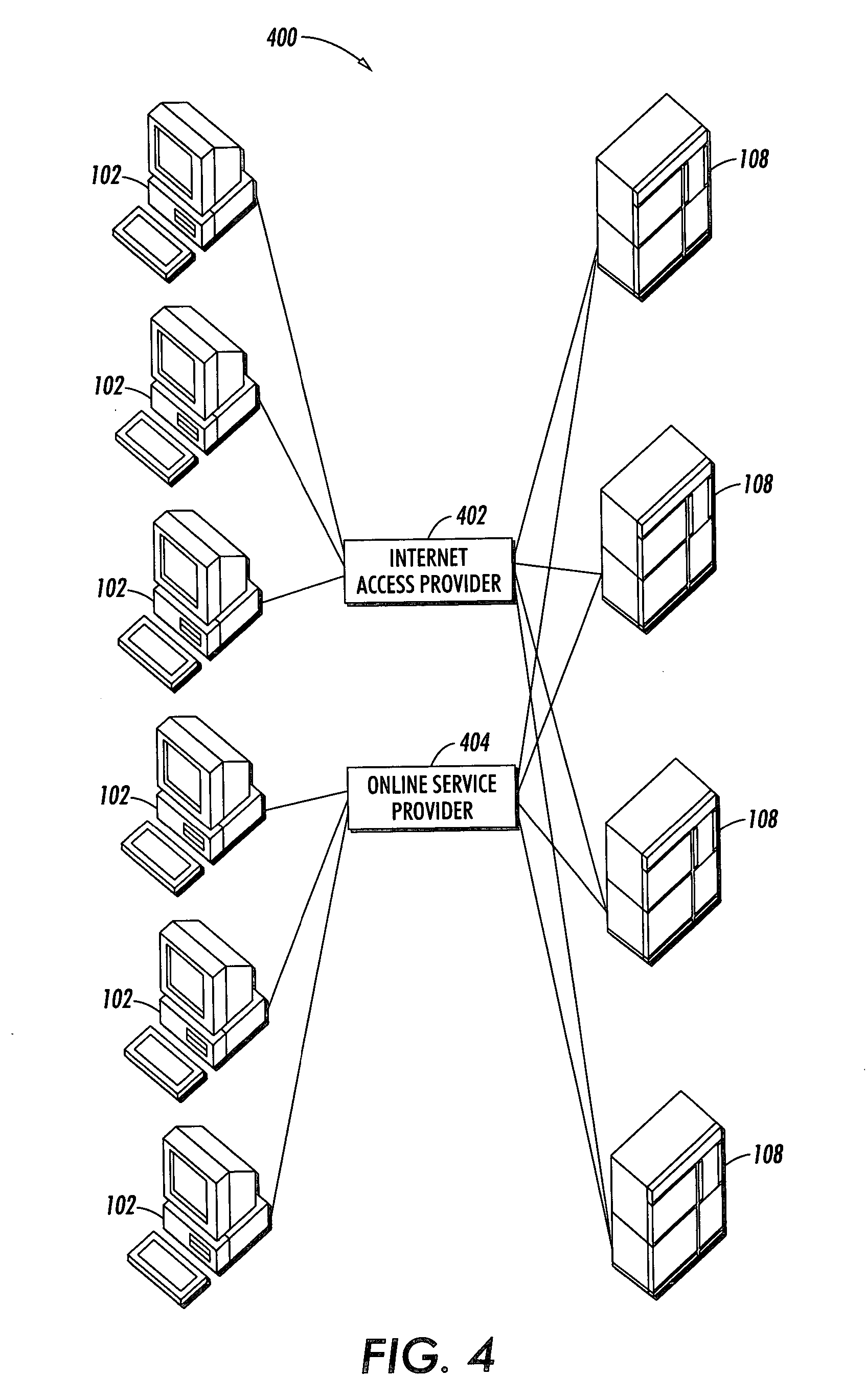Pay e-mail methods and systems
a technology of pay-per-e-mail and pay-per-e-mail, applied in the field of pay-per-e-mail methods and systems, can solve the problems of ineffective methods, users of e-mail systems spending an increasing amount of time separating regular e-mail messages, and ever increasing amount of junk e-mail messages received by the destination clients, so as to prevent fraud and avoid uncertainty.
- Summary
- Abstract
- Description
- Claims
- Application Information
AI Technical Summary
Benefits of technology
Problems solved by technology
Method used
Image
Examples
Embodiment Construction
[0028] The particular values and configurations discussed in these non-limiting examples can be varied and are cited merely to illustrate embodiments and are not intended to limit the scope of the invention.
[0029]FIG. 2 illustrates a block diagram illustrative of a client / server architecture system 200 in which embodiments can be implemented. It can be appreciated by those skilled in the art that the system illustrated with respect to FIGS. 2 to 4 is an example of one type of computer network in which embodiments can be implemented, particularly in the context of e-mail filtering management. Other types of computer networks can also be utilized in accordance with alternative embodiments of the present invention, such as, for example, token ring networks, wireless communications networks, Intranets and / or organizationally dedicated computer networks rather than a more open computer network, such as the Internet. FIGS. 2-4 are thus presented for illustrative purposes only and are not...
PUM
 Login to View More
Login to View More Abstract
Description
Claims
Application Information
 Login to View More
Login to View More - Generate Ideas
- Intellectual Property
- Life Sciences
- Materials
- Tech Scout
- Unparalleled Data Quality
- Higher Quality Content
- 60% Fewer Hallucinations
Browse by: Latest US Patents, China's latest patents, Technical Efficacy Thesaurus, Application Domain, Technology Topic, Popular Technical Reports.
© 2025 PatSnap. All rights reserved.Legal|Privacy policy|Modern Slavery Act Transparency Statement|Sitemap|About US| Contact US: help@patsnap.com



